A few more:


A lot of the controls are still there, but most of the gauges and indicators were either stolen or removed before they could be stolen.
A few more:


A lot of the controls are still there, but most of the gauges and indicators were either stolen or removed before they could be stolen.
I just realized something based on your pics & description - I was watching Virtual Railfan a week or so ago & I noticed a steam loco & some other equipment in their views of Elkhart. It must be this museum! Honestly, what I could see from their viewpoint didn't really look like a complete museum, but from your pics I see there was other equipment out of view.
Yeah, it's not a huge museum, but admission is only $6, so you kind of "get what you pay for". We were actually on the Elkhart Virtual Railfan cam today at about 12:30pm.
So the rough-looking tender coupled behind the tender of #3001 is actually off the #3042. It was converted to an auxiliary water tender and used behind Reading #2101 when that engine was pulling Chessie excursions. When #2101 was damaged in the Silver Grove roundhouse fire in '79, so was that tender
In reply to ShawnG :
That one, unfortunately, wasn't open. It was in pretty rough shape externally. Still cool to see it close up. It's a beast.
Their E7 was, however, open and you could crawl around the cab and entire engine compartment. (It was most definitely not an "OSHA Approved" tour, but it was fun!) Kazookid2 was pretty amused that they put the toilet right in front of one of the porthole windows.
In reply to kazoospec :

I think the roughest GG1s are the 2 that are in Cooperstown Junction, NY. They were bought by some historical society with no real assets or money or plan. One was supposed to go to a museum in Connecticut but that fell through and then The Henry Ford Museum bought another but has no way to get it to Michigan because CSX refuses to interchange it
Also saw these two old girls at work locally in the evening. The lead engine was putting out a smoke cloud worthy of 007 himself.

In reply to kazoospec :
Doing some reading, those are Canadian National "GP40-3s", which was a rebuild program with a homebuilt safety cab.

Speaking of CN, they have announced they are going to get into heritage units as well. They posted a list of all the liveries they are painting:
Column 1:
Pacific Great Eastern
British Columbia Rail
Bessemer & Lake Erie
Duluth, Missabe & Iron Range
Detroit, Toledo & Ironton
Duluth, Winnipeg & Pacific
Elgin, Joliet & Eastern
Central Vermont
Grand Trunk Western
Column 2:
Illinois Central
Illinois Central Gulf
Canadian National Mk I
Canadian National Mk II
Algoma Central
Wisconsin Central
Green Bay & Western
Gulf, Mobile & Ohio
Canadian Northern
In reply to NickD :
We actually saw an engine painted in the "BC Rail" scheme running a freight paired with a regular CN unit a couple weeks ago.
In reply to kazoospec :
The BC Rail one is already painted and the Illinois Central one as well. There is a GP40-3 and slug that was recently painted in the old Canadian National green and gold livery but whoever did the paint botched the colors. The green is more lime than olive and the gold is more of a lemon yellow. It looks more like an Illinois Terminal livery. I'm also not quite sure why you'd paint a yard engine and slug as a heritage unit.


Local regional line Mohawk, Adirondack & Northern still has some Alco C424s and MLW M420Ws running around in both the Pacific Great Eastern/BC Rail two-tone green and white, as well as one or two in the later BC Rail red, white and blue. They are slowly being repainted into parent company Delaware-Lackawanna's gray, yellow, white and red. And I mean slowly.


It'd be interesting to see CSX Transportation get into the heritage units, because they have some good paint schemes in their portfolio that'd be neat to see ride the rails again.
Like Pere Marquette
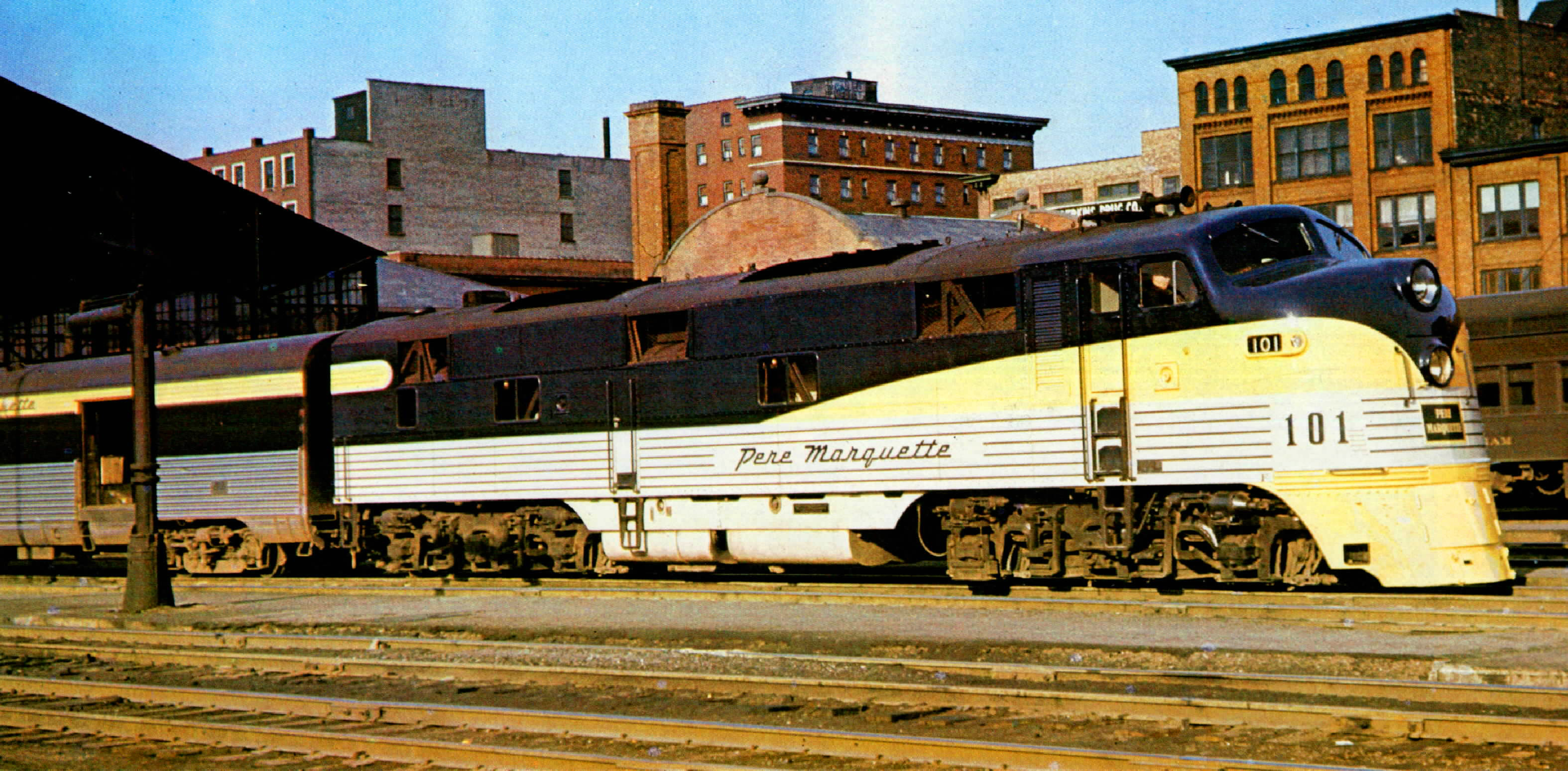
Or Baltimore & Ohio, either the classic scheme or the later "searchlight" scheme


Western Maryland's Fireball or Circus liveries


Definitely Chessie Systems, as that is one of my all-time favorite liveries
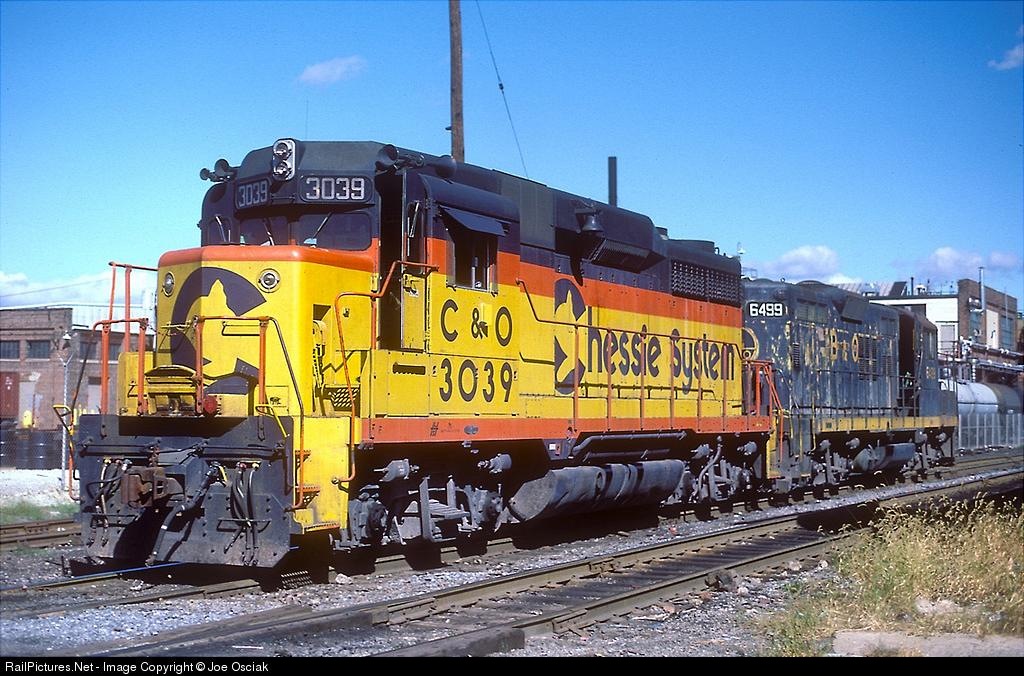
Seaboard Air Line red and white

Atlantic Coast Line's silver, purple and yellow would be really fun to see roam the rails again.
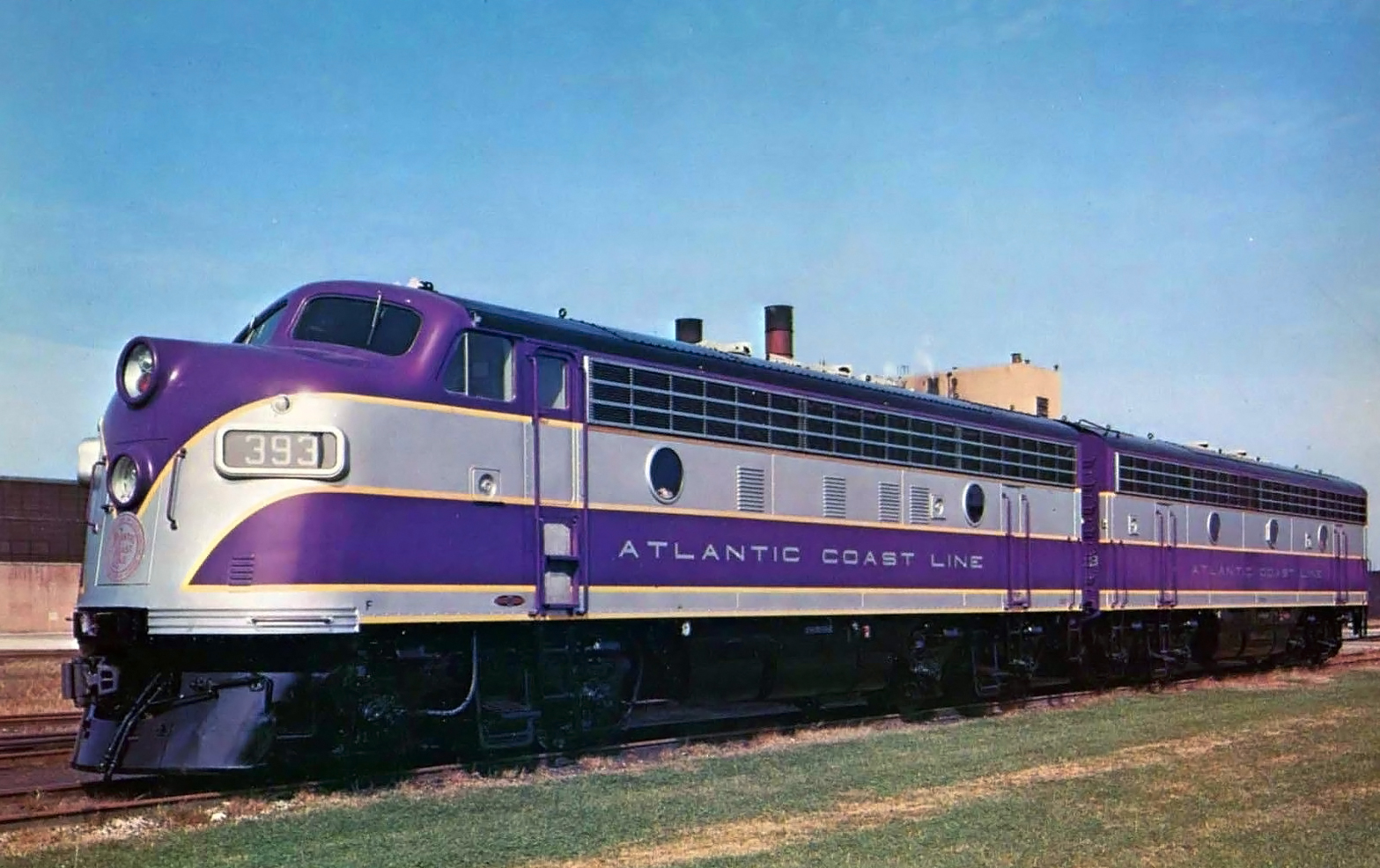
Or Monon's black and gold or grey and red.


CSX did release some heritage units a while back but they were pretty lame. They used the standard CSX livery but with a heritage line logo on the cab sides. Pretty "blink and you'll miss it". It's too bad that CSX is such a wet blanket sometimes.


A photoshop of a Chessie Systems GE. I dig it.

Apparently Lionel made a fictional Chessie Systems GE AC6000 as well. The blue is a little too light, it's supposed to be almost black, but not bad.
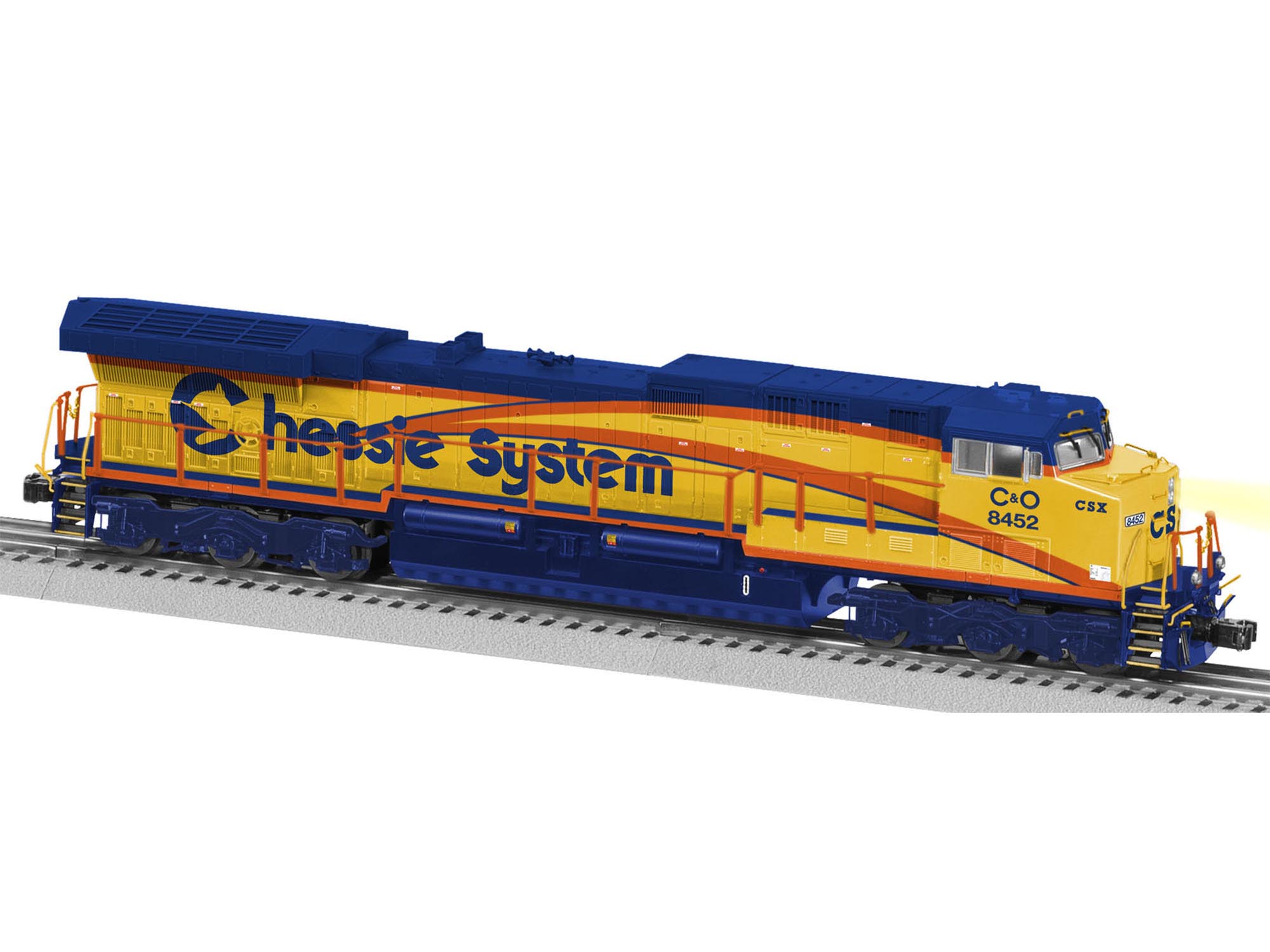
If CSX were to ever change their attitude, they could run a real nice corporate steam program like Norfolk Southern and Union Pacific. Chesapeake & Ohio #614, which once pulled excursions over CSX rails, is sitting up in Clifton Forge, VA, waiting for someone to write Ross Rowland a check to put her through her FRA inspection and go pound the rails.
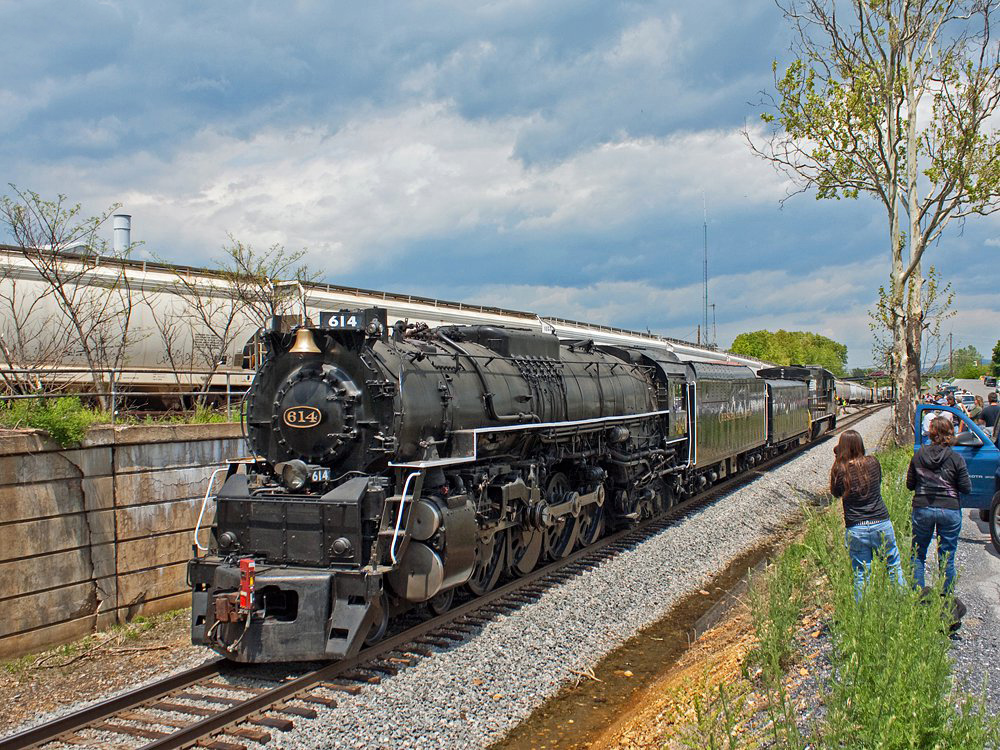
C&O #2716, a 2-8-4 Kanawha, is currently being restored at Kentucky Steam Heritage Center in Ravenna, KY. I am waiting to see what is really going on there, because they said they are restoring her to operational status but don't have any trackage of their own. CSX helped move the locomotive to the old L&N railyard in Ravenna with the old restored Clinchfield F7 they have, and there is speculation that CSX might announce some sort of partnership once #2716 gets closer to operation

And then there is Nashville, Chattanooga & St. Louis #576, which CSX helped move to its restoration location and then donated a boxcar for the #576 team to use as a toolcar
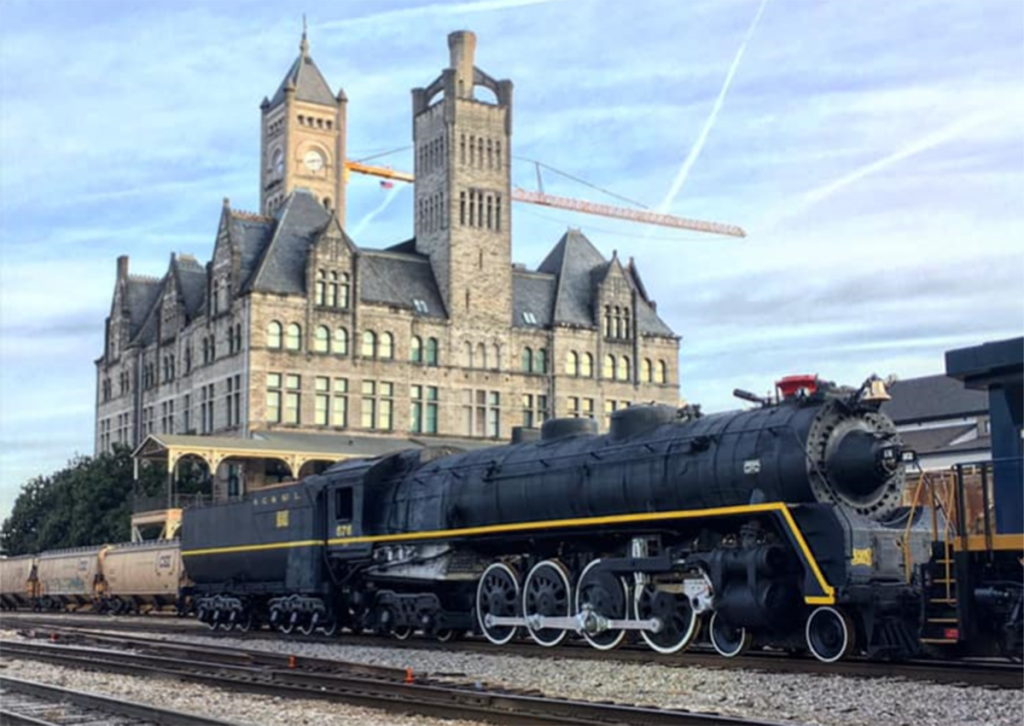
They've also done some other under-the-radar preservation stuff, like donating an old Conrail boxcar to be used as a display center for a Conrail museum. It seems like CSX may be starting to soften their attitude a little
2716 was in a Kentucky Steam video that showed both sides of the firebox cut out and being replaced.
In reply to LS_BC8 :
The firebox was always a trouble spot on the #2716. It only pulled excursions for Southern from October of '81 until June of '82 before the firebox cracked. It sat at Southern/Norfolk Southern's Irondale shops for 12-13 years before they decided to get rid of it, then the folks who run Nickel Plate #765 welded up the firebox and ran it for a few months before parking it as well. So, it makes sense that to make a reliable excursion engines, you should just cut the old firebox out and put all new metal in that hasn't been cracked and repaired.

I'd like to see #2716 get her fairy tale ending, as that poor engine has had nothing but bad luck: an aborted attempt at a restoration in 1979 by Clinchfield Railroad that left it dismantled, the short-lived operation for Southern Railway, then 12 years in storage, then a couple months operation with Fort Wayne Railroad Historical Society before they parked it to focus on making NKP #765 compliant with new FRA regulations.
Honestly, the #2716 seems to be the best off though. C&O set aside 13 K-4 class Kanawhas (a Berkshire everywhere else) for preservation and despite being one of the most preserved single classes of a steam engine, the C&O must have angered the gods for them to be as forsaken as they are. Twelve remain today, and the majority of them are in poor shape. Ironically, the Van Sweringen Berkshire that has the least amount preserved are in the best collective condition (Pere Marquette's two) while the variant with the most preserved are in the worst collective condition.
#2700: The first of the Kawawhas received by C&O, this was an Alco built example. It was originally donated in 1956 and displayed in Coonskin Park in Charleston, WV adjacent to the B&O line from Charleston to Sutton. During its year sthere it was badly neglected and vandalized. It was then moved to St. Albans at some point in the '70s and given a restoration with parts that collectors had stripped off other K-4s on the scrap line. In '86 it was moved to Canton, OH by a now-defunct group with hopes of a restoration, which never happened, and it sat on a Wheeling & Lake Erie spur, with many of its parts removed for the aborted restoration, for years until J.J. Jacobson (founder of Age of Steam) saved it at the 11th hour and it was moved to Dennison, OH. It sat there until 2010 and was one of the most neglected engine in the country, missing its running board, boiler jacketing, whistle, bell, numbers, headlight, cab windows, controls and gauges and with a rusted-out tender and cab. Scrapping the engine was considered, since it needed so much work and there were 11 other extant examples. Finally, in 2017, Dennison restored the engine and has it looking very nice.

#2701: I said there were 13 preserved and 12 still in existence. #2701 was the unlucky one. In '54 the C&O donated it to Buffalo, NY on a short stretch of track along the waterfront, without any fencing or protection. Within the first week all the cab glass had been broken and any parts that could be easily removed, short of using a torch, were stolen. Within a few months, the city determined the #2701 to be an eyesore and cut the engine up on the spot. Photos of it on display are rare, but one I did find you can see the headlamp glass and numberboard glass are already smashed out

#2705: The #2705 was actually sent to a scrapyard at Russell, KY with three other K-4s (#2756, #2770 and #2781), the last remaining K-2 Mikado (#1189), J-3a Greenbrier (#614, but still wearing #611, which it had been temporarily renumbered to), H-6 2-6-6-2 (#1309, and Baldwin's last steam locomotive) and H-8 Allegheny 2-6-6-6 #1604. The #1604 was donated to Roanoke in 1969, and tragically the K-2 was cut up, along with the #2770 and #2781. The remainder were moved to the B&O Railroad Museum in '75, where they almost all still reside. #614 would leave in 1979 to go be an excursion engine, and #1309 is now being restored to operation at Western Maryland Scenic. She looks a bit scruffy these days, needing a new coat of paint (last painted in 1996) , but the rust appears largely surface and she is still fairly complete.
#2707: One of the more mysterious backgrounds. It had been put on display in Brookside Park in Cleveland, OH in 1955. At some point it became a derelict eyesore and was sent to a scrap dealer. An unknown private individual purchased #2707 from a scrap dealer and moved to the old B&O roundhouse in Cleveland, which was leased by the Midwest Railway Historical Society. At some point in the 1990s it was sold to Illinois Railroad Museum. I saw a photo of them moving locomotives around the yard with Frisco #1630, and the #2707 was one of those engines and she looks rough
#2716: Not much more to say there. Probably the best kept and has the best outlook

#2727: Probably up there with #2716 for best-maintained. It was sold to the National Museum of Transportation in '57. It has a roof over its head, which goes a long ways towards keeping an engine in good shape. She's not pristine, but she's not a rotted-out, vandalized hulk either.

#2732: Originally parked at the Robin Hood Road Visitor Center in Richmond, the city closed the visitor center in 2000 and it was moved to the Science Museum of Richmond in 2003. Its boiler jacketing has been removed (at least the asbestos boiler lagging was also disposed of) and the whistle is missing and the cab controls vandalized. The cab was also badly rusted out at that point in time. At some point it received a light cosmetic restoration and looks much better than it did, although it still is missing the boiler jacketing.


#2736: Donated to the National Railroad Museum in Green Bay, it is missing its boiler jacket and sat outside until sometime in the early 2000s. Its not as rough as others, but its scruffy. Being indoors will stabilize it though.
#2755: Better off in recent years than she was, the #2755 is at Chief Logan State Park in Logan WV. In the '70s her cab windows were smashed and just about everything in the cab vandalized or stolen. Sometime in 1996 it received a cosmetic restoration and finally had a fence erected around it. Numerous groups have made offers to restore it over the years but have been turned down. She still has her boiler jacketing though.

#2756: She came out of the same scrapyard as the #2707 and went to Huntington Park in Newport News (what a stupid name), VA. It received a good cosmetic restoration in the late '90s, was looking sad circa 2012 and is receiving another one in a photo from 2019. Its hard to get a good photo of her due to the fence with huge brick posts and shurbs. Looks like the boiler jacket was removed in 2019, probably for asbestos abatement.

#2760: On display at Riverside Park at Lynchburg, VA, the #2760 was in deplorable condition. Everything that could be stolen was stolen, there was barely any paint left on the engine, severe rust-through everywhere. In 2004, a schoolteacher and the Kiwanis club raised the money to restore the locomotive and a caboose that was displayed with it. There was a passenger car there as well, but that was scrapped due to being beyond repair. As of 2018 the restoration was completed and an awning was constructed over the engine.




#2776: The #2776 is at Washington Court House, Ohio, which is an odd place, since the C&O never went to Washington Court House. That city was serviced by PRR and DT&I. In 1960, when 2776 was placed here, the engine was separated from the tender first, since the radius was too sharp off the mainline to move them together. First the tender was moved into its present position and then the engine was placed in front of it while they repositioned the track in front to move the engine forward. They then moved the engine forward and repositioned the track behind it and moved it into it present position with a backhoe. The #2776 is reported to be in excellent condition, as its self-appointed caretaker removed all the valuable parts and stored them separately and frequently oils, greases and paints parts of it in the hopes that it might see fire one day.

#2789: The #2789 is the very last C&O Kanawha built. It is in North Judson, IN at the Hoosier Valley Railroad Museum. Since 1998, the #2789 has been undergoing a slow but steady restoration, with the official word being that it is an operational restoration. An insider's statement "Well, the HVRM "official policy" toward the 2789 is to restore her to active service. But there has been no move toward actually doing that for a good number of years. We actually have a complete set of new flues sitting in a couple of our storage box cars... A number of years ago, we actually did an ultra sound on the boiler. So why the change in attitude? Well, for one reason, our current Board is not committed to a restoration of the Kanawha. And truthfully, there are reasons for their current attitude. First, we are located in northwest Indiana and there are two Van Sweringen 2-8-4's (Pere Marquette 1225 and NKP 765) in the rough appoximate area that have been restored, and frankly, just don't operate very much, or not at all. Secondly, even with a set of new flues, there is a large amount of money that would be needed to get the `89 running. There are other reasons, but these two factors in themselves, are probably decent reasons for our Board to not make the committment to begin work on the 2-8-4." But its being nicely restored and kept inside and not blown into a billion pieces for a restoration that won't ever be completed.
Its too bad that they couldn't save the K-2 "Big Mike", #1189, that was in the Russell, KY scrap line with #2705 and #2756. Honestly, the #1189 being saved and all 4 of the Kanawha's being scrapped would have been a more ideal outcome, since there were already plenty of other Kanawhas preserved but no C&O Big Mikes. Not only that, but C&O #1189 was the last existing USRA Heavy Mikado, a class that no other examples across any other railroad were saved. I found one person claiming that the #1189 was supposed to be preserved and moved to the B&O Museum but after 23 years of sitting in the scrap yard, it had deterioriated to the point where they weren't sure it would make the move from Russell to Saint Clare, plus the museum directors weren't as hung up on that engine because the museum already had a B&O Mikado.


Those C&O Mikes were a spectacularly brutish-looking engine, with their cross-compound air pumps and Elesco feedwater heater hanging off the front of smokebox.



So the 'boiler jacket', was it insulation to help keep heat in the boiler for better efficiency of the locomotive, or to reduce the heat going into the cabin, or was it a combination of both?
Or was it based on making a streamlined finish to the engine overall?
An aerodynamic advantage could be argued, but I am certain that based on the overall weight of the locomotive and whatever it was hauling would be a net zero on drag reduction.
DjGreggieP said:So the 'boiler jacket', was it insulation to help keep heat in the boiler for better efficiency of the locomotive, or to reduce the heat going into the cabin, or was it a combination of both?
Or was it based on making a streamlined finish to the engine overall?
An aerodynamic advantage could be argued, but I am certain that based on the overall weight of the locomotive and whatever it was hauling would be a net zero on drag reduction.
It was to keep heat in and prevent thermal shock. Around the boiler, you had lagging, which was an insulation that was, as far as I can tell, always made of asbestos. Then, to protect that from elements and wind and other damage, you have the thin metal boiler jacketing. It also cleans appearances up quite a bit. And occasionally crew members have to get on top of a hot engine, so it keeps them from getting burned.
When engines were operated regularly, it wasn't a huge issue. Even if the jacket wasn't watertight, it kept most of the water out and what water did soak in got cooked off by the boiler heat. But when they sit on display, the lagging gets water-logged and doesn't dry out, and then it rots out the boiler and the lagging. And then there is the issue of asbestos. So a lot of park engines or display engines, either the jacket rots off and they throw it away or they remove it when they do asbestos abatement and then never reinstall it. You see a lot of engines that are stuffed and mounted without the jacketing and it just looks ugly and messy with all the exposed hard lines and rivets and staybolts. One group tried using galvanized steel for jacketing; it never rusted but they could not get paint to ever stick to it.
For today's usage there are a few new materials that they use instead of asbestos (for obvious reasons). Fiberglass blankets are one, although some gripe that they get wet and then migrate south, as well as not supporting the jacket and causing it to dent/warp when stepped on. Cerawool blankets, refractory blankets made from alumina, silica and other refractory oxides, area also popular. And then calcium silicate blocks and mud are the other big one. The calcium silicate blocks are nice because they support the jacket so that it doesn't flex and bend and warp if someone has to walk up top, but apparently its nightmarish E36 M3 to work with. I also saw photos of something that looked like a kind of spray foam when FEC #148 was restored.
If you are ever near an engine that still has jacketing and it looks like it has not been touched in a long time and there is white powder coming out from under it, get away from it. That's likely asbestos dust. The amount of engines out there with asbesto lagging still on them 70 years later is surprising. More than one park engine has been cut up and scrapped, rather than deal with asbestos abatement.
In reply to NickD :
That makes a lot of sense. I figured it was a multiple purpose reasoning. I don't mind the look of it missing on the more derelict engines, has a steampunk/utilitarian vibe that I like.
If one is cutting up a locomotive without first removing the asbestos, they are breaking several laws. So they should still be having to deal with it.
spitfirebill said:If one is cutting up a locomotive without first removing the asbestos, they are breaking several laws. So they should still be having to deal with it.
Well, they would scrap it to use the money to offset the cost of asbestos disposal, rather than pay to remove the asbestos and then have to also pay to reassemble the engine and spruce it up
You'll need to log in to post.